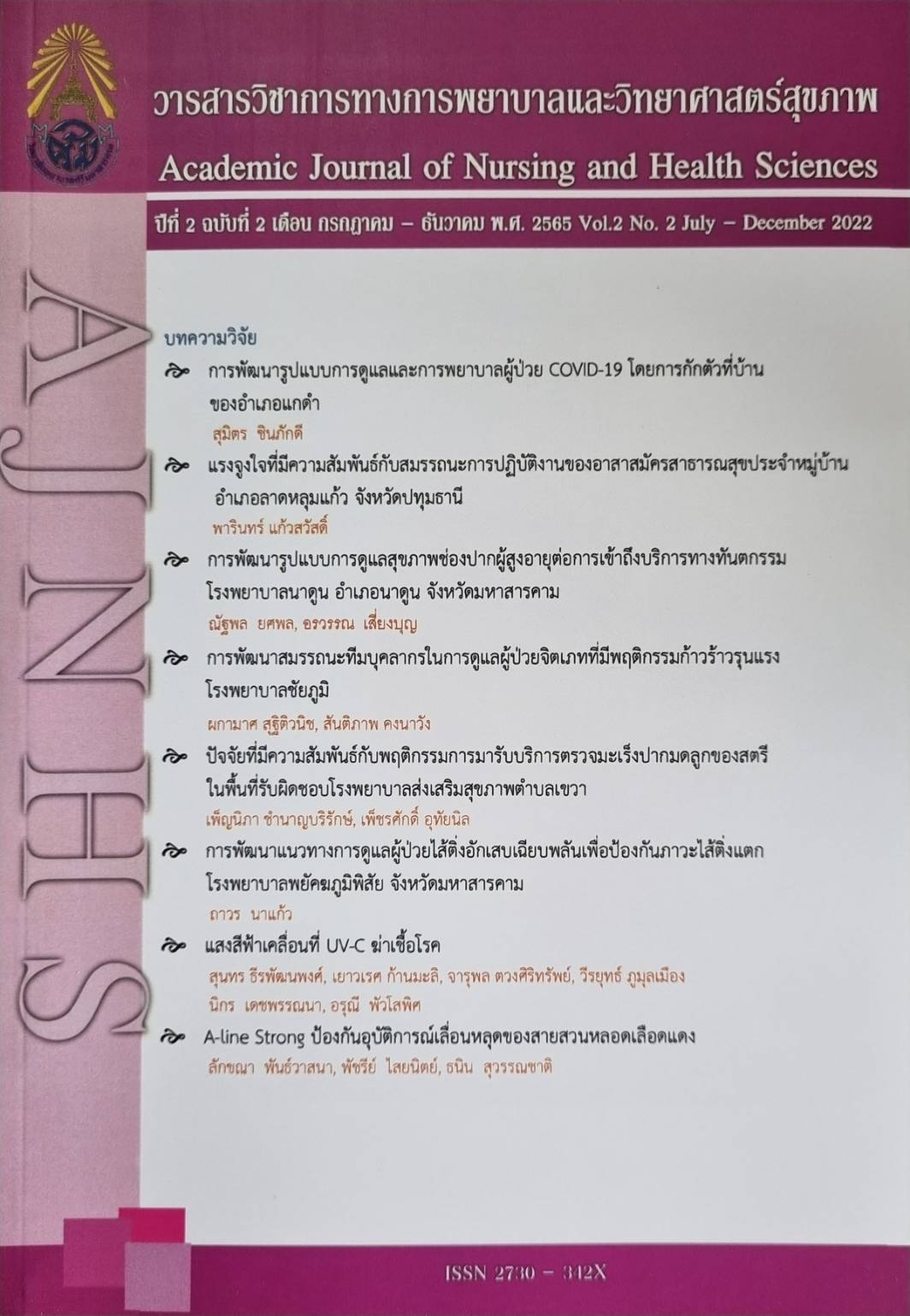A-line Strong for preventing the slippage of the Transradial Catheterization
Keywords:
Prevention, Arterial catheter slippageAbstract
Arterial pressure monitoring is a form of invasive blood pressure monitoring and is done through the cannulation of a peripheral artery. This form of monitoring is commonly utilized in the management of critically ill and perioperative patients. These include patients on prolonged mechanical ventilation, which necessitates an analysis of arterial blood gas. The most common site of arterial cannulation is the radial artery due to ease of accessibility. Other sites are the brachial and Ulnar artery. The patient will have to move the arm or wrist, causing the arterial line to have a high chance of bending or slipping. If it is bent or slipped, monitoring of patient blood pressure is inconsistent and inefficient. Causing trauma to the artery or sometimes the doctor needs to insert a new arterial line, causing the patient to suffer pain Risk of infection, wasted time and increased cost. The person in charge of the project is therefore interested in developing the A-line Strong innovation. Previously, the innovation had been created once, which was a device made of cloth that was difficult to clean and also caused the arterial catheter slippage. To get a device that is strong, durable, easy to clean When used, there is no effect on the patient. therefore invented and designed together with Orthotic work to create this innovation for real use.
Results: -There is no bending or slipping of the Arterial catheter. - Blood pressure assessment through the arterial line is continuous.
References
การพัฒนาแนวทางการดูแลผู้ป่วยที่ทำหัตถการแทงสายสวนหลอดเลือดแดง. [เข้าถึงเมื่อ 30 สิงหาคม 2564]. สืบค้นจาก http://www.nejm.org/doi/full/10.1056/NEJM-vcm1513613
ฝ่ายการพยาบาล โรงพยาบาลจุฬาลงกรณ์. (2558). มาตรฐานการพยาบาลผู้ป่วยที่ใส่ Arterial-line. กรุงเทพฯ: โรงพยาบาลจุฬาลงกรณ์.
Burdette, S., D. Systemic inflammatory response syndrome. [cited 2022 September 7] Available from: http://emedicine.medscape. com/article/168943- overview – show all
Pornsirirat, T. (2015). Septic Shock. In Naowapanich,. S., and Pinyopasakul,.W.(ed.), Criticalcare : medicalnursing. Bangkok: Parbpim Ltd.
Rhodes, A., et al. (2017). Surviving sepsis campaign: international guidelines for management of sepsis and septic shock 2016. Intensive care medicine, 43, 304-377.
Downloads
Published
How to Cite
Issue
Section
License
Copyright (c) 2023 วิทยาลัยพยาบาลศรีมหาสารคาม คณะพยาบาลศาสตร์ สถาบันพระบรมราชชนก

This work is licensed under a Creative Commons Attribution-NonCommercial-NoDerivatives 4.0 International License.


